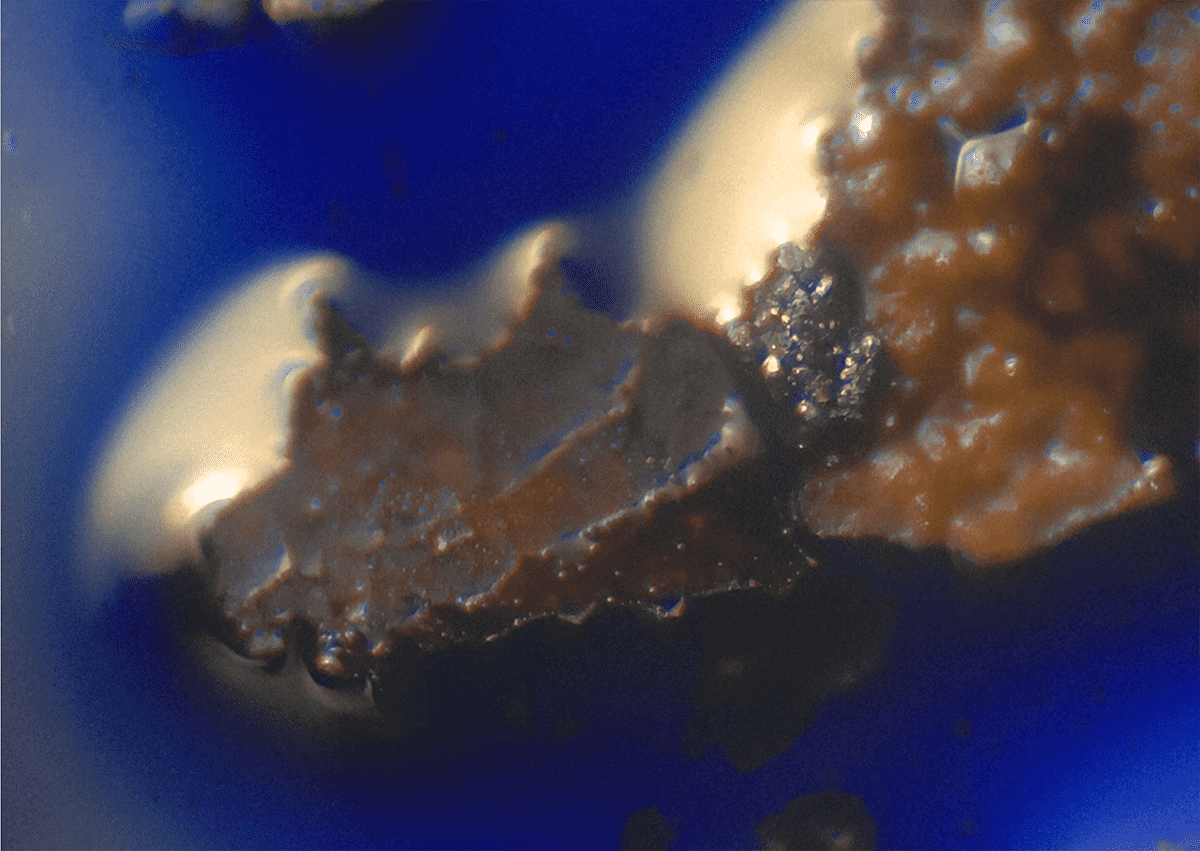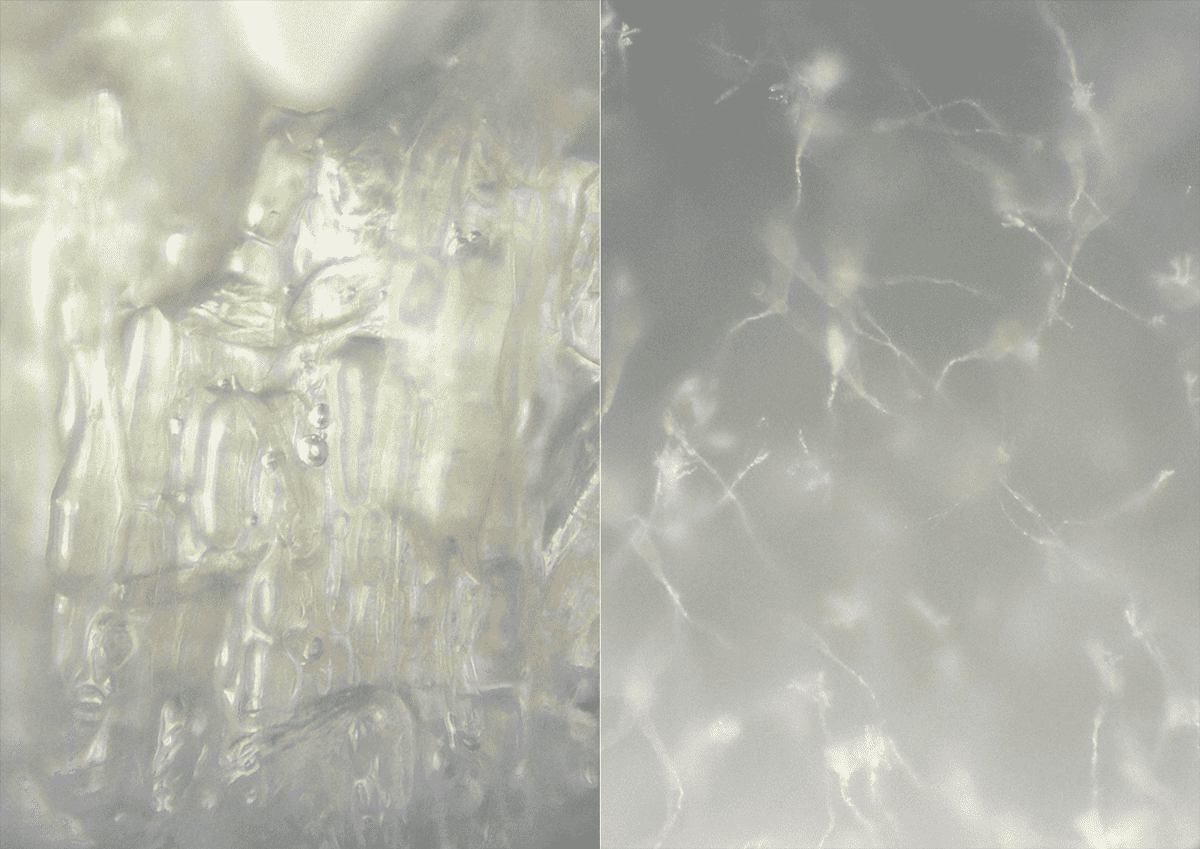NI DIEU NI MAÎTRE by Eleonore Piret: An Elegy of Chaos and Beauty through the Microscopic Lens

In a world consistently driven by the pursuit of order and elucidation, Eleonore Piret gracefully submerges readers into a visually evocative journey that intertwines chaos, beauty, and philosophy through her recent work, a photography book "NI DIEU NI MAÎTRE". Through the lens of microscopic photography, Piret presents a fascinating dialogue that contrasts but also somehow coexists between the scientific and the artistic.
A Dance of Colors and Cells
At first glance, the images within "NI DIEU NI MAÎTRE" might be misconstrued as a scientific exploration of human biology. However, Piret, with splendid mastery over her medium, transcends mere biological representation to offer viewers an uncharted territory where science and art coalesce in a tender yet occasionally unsettling exploration of the human condition. The elegant microscopic views of human features such as skin and hair along with other earthly elements become a canvas upon which philosophical ponderings about existence, control, rebellion, and beauty are elegantly inscribed.
The visual journey within the book is notably enriched by an eloquent use of colors, which could be labeled as tender yet assertive, embodying both subtlety and boldness. Piret has chosen a color palette that is not merely an aesthetic choice but rather a fundamental constituent of the emotional and symbolic narrative she weaves throughout the book. The colors, somehow reflective of current trendy palettes, engage in an intricate dance with the microscopic images, lending a contemporary and relatable visual language to the profound themes being explored.
Epistemological Anarchism & The Rebellion of Cells

Interweaving the delicate textures of epistemological anarchism, the book crafts a compelling narrative that portrays cells as metaphors for unbridled, chaotic life. Cellular structures, despite being minute and ostensibly simplistic, embody the quintessential principles of life and rebellion. Piret, through her microscopic lens, perceives and projects the cells as entities that cannot be entirely controlled or predicted, embodying the essence of life’s true anarchy. Drawing a parallel to human existence, she suggests that just like cells, humans can be studied and observed but never absolutely controlled nor confined.
One can observe a symmetrical beauty in how "NI DIEU NI MAÎTRE" connects the minuscule with the magnificent, comparing the tumult of rebellious cells to the grand cosmic dance of celestial bodies in the universe. This notion of revolt and disorder being intrinsic to both the microscopic and macroscopic realms reflects a profound understanding that life, in its various scales and forms, thrives amidst chaos and unpredictability. Piret daringly suggests that the intrinsic disorder that births and fuels life itself is dependent upon its initial chaos.
The book also poetically explores birth - from the invisibility of embryonic development to the unforeseeable and chaotic alliance of electrons that forms the foundation of life. The idea of birth, both in a biological and ideological context, is presented as a confluence of random, uncontrollable events leading to creation and revolt. Through the meticulous close-up photography of cellular structures and forms, she metaphorically reflects upon society and anarchism, suggesting that the very essence of life and society is rooted in an anarchic lack of control.
Anarchy and the Ineffable Poetry of Existence

While anchoring her visuals deeply into the scientific, Piret elegantly sways into the philosophical realm by introducing the concept of mutual support within an anarchic system. She exemplifies how trees help each other in a forest or how cells mutually assist one another, without a discernible rationality or conscious strategy - a phenomenon that cannot be explained solely through scientific reason and instead ventures into a realm of natural anarchy that is perhaps more harmonious and genuine than contrived order.
Piret touches the inexplicable poetry that is life, acknowledging the paradox of existence amidst the unending cosmic void. Her visuals of cells and human features emphasize the unexpected and unintentional beauty that arises from random encounters and mutations, propelling the narrative that excessive order, control, and uniformity ironically leads to stagnancy and death rather than the preservation of life.
Aligning with Milan Kundera's thoughts in "The Unbearable Lightness of Being," the book poetically navigates through the lightness and weight of existence, alluding to the existential paradox that life perennially presents. Piret not only acknowledges but immerses herself and the viewers into the ambiguity of the world, its perpetually flowing stability and unpredictability, inviting them to find solace and perhaps beauty in its unresolved and eternal mystery.
In "NI DIEU NI MAÎTRE," Eleonore Piret has seamlessly blended art, science, and philosophy into a mesmerizing visual and conceptual exploration of existence, anarchy, and the implicit order found within chaos and rebellion. With its elegant microscopic photography and contemplative narrative, the work offers a unique lens through which to view and ponder the complex, beautiful anarchy inherent in life and existence.
You can find out more on the artist pages: Website and Instagram
Now you can also buy the book "NI DIEU NI MAÎTRE" by Eleonore Piret.